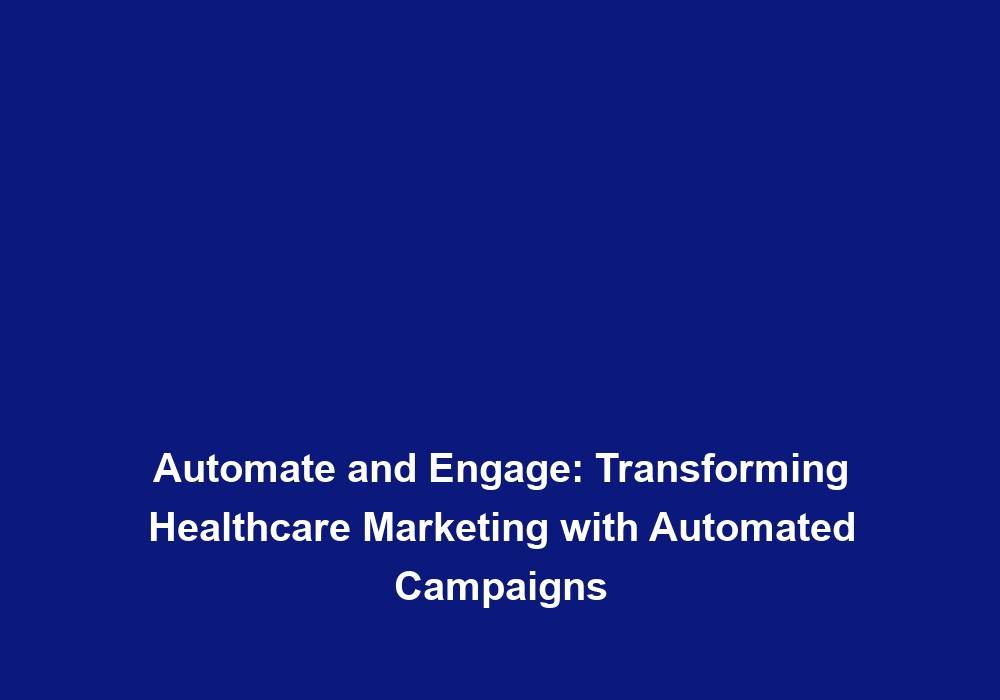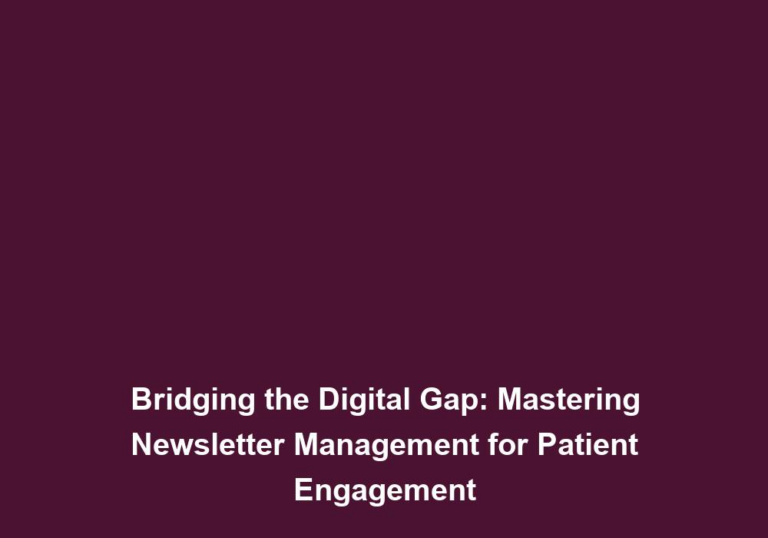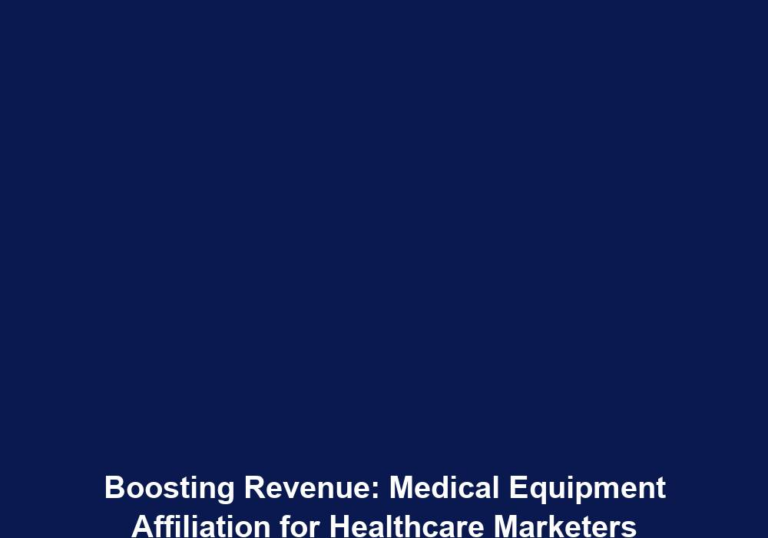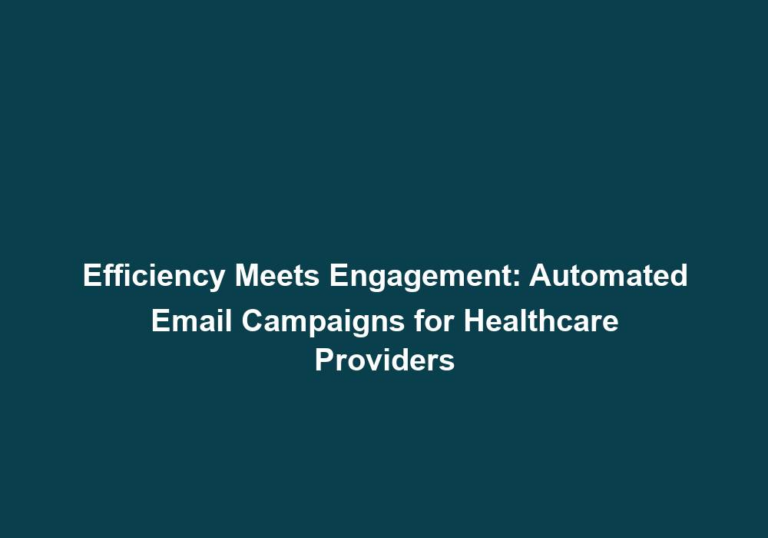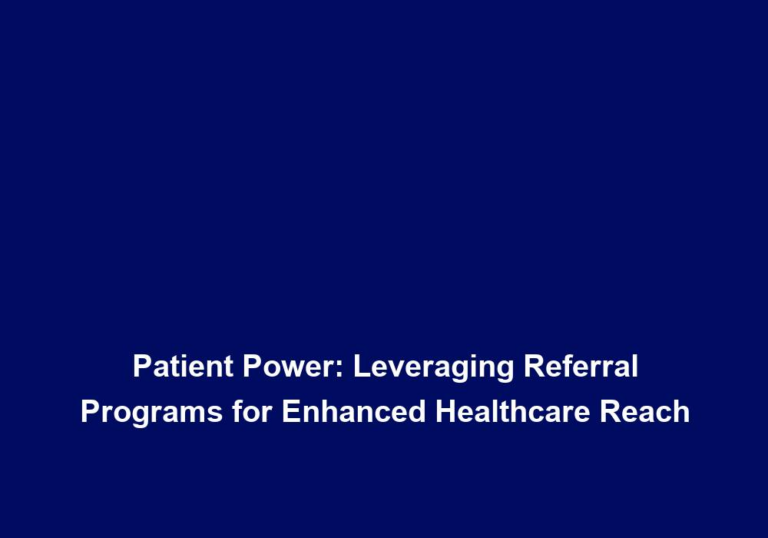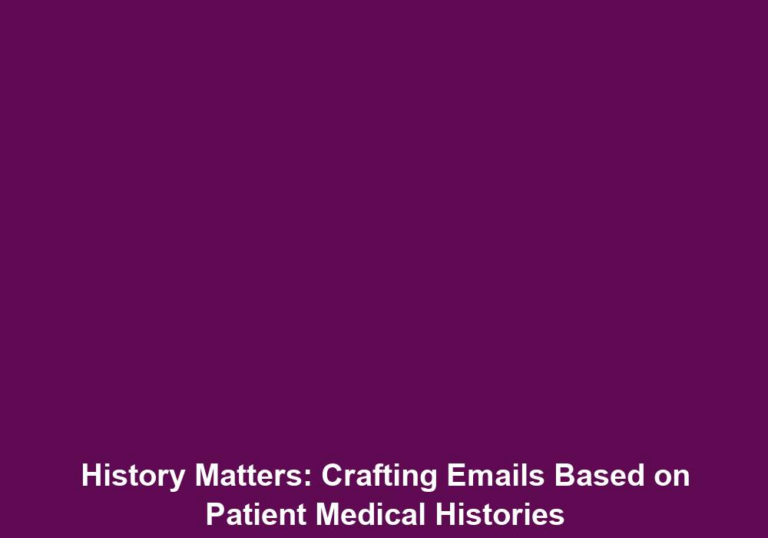Automate and Engage: Transforming Healthcare Marketing with Automated Campaigns
In today’s digital age, healthcare marketing has become increasingly competitive and complex. It is crucial for healthcare organizations to adopt innovative strategies to attract and retain patients. One such strategy that has gained significant momentum is the use of automated campaigns. Automation not only streamlines marketing efforts but also enables healthcare providers to engage with their target audience in a more personalized and efficient manner. In this article, we will explore how automated campaigns are transforming healthcare marketing and why they are essential for success in the industry.
The Power of Automation in Healthcare Marketing
Automated campaigns in healthcare marketing involve using software platforms to automate various marketing tasks, such as email marketing, social media posting, lead nurturing, and customer relationship management. By leveraging automation, healthcare providers can save time, enhance efficiency, and deliver more targeted and relevant content to their audience.
Benefits of Automated Campaigns in Healthcare Marketing
- Time-saving: Automated campaigns enable healthcare marketers to automate repetitive tasks, freeing up valuable time that can be better spent on strategic planning and creative initiatives. With automation, marketers no longer have to manually send emails or post on social media platforms, allowing them to focus on higher-value activities.
- Increased efficiency: By automating marketing workflows, healthcare organizations can ensure that every stage of the customer journey is carefully orchestrated, from initial awareness to conversion and retention. Automated campaigns can guide patients through a seamless experience, providing them with the right information at the right time, ultimately leading to higher conversion rates and improved patient satisfaction.
- Personalization: Automation allows healthcare marketers to segment their audience and deliver personalized content based on their preferences, demographics, or previous interactions. By tailoring the messaging to specific patient needs, healthcare organizations can establish stronger connections and build trust, leading to higher engagement and loyalty.
- Improved engagement: With automated campaigns, healthcare organizations can engage with their audience at the right time and through the right channels, increasing the likelihood of meaningful interactions and conversions. For example, automated appointment reminders can be sent via email or SMS, ensuring that patients stay informed and reducing the chances of missed appointments.
- Data-driven insights: Automation platforms provide rich data and analytics, enabling healthcare marketers to track campaign performance, identify areas for improvement, and make data-driven decisions. By analyzing metrics such as open rates, click-through rates, and conversion rates, organizations can refine their campaigns and optimize their marketing strategies for better results.
Key Components of an Automated Healthcare Marketing Campaign
When developing an automated healthcare marketing campaign, it is essential to consider the following key components:
- Goals and objectives: Clearly define your campaign’s goals and objectives. Are you looking to generate new leads, increase patient appointments, or improve patient retention? Having well-defined goals will guide your campaign strategy and metrics for success. For example, if the goal is to increase patient appointments, the campaign can focus on sending personalized appointment reminders and offering convenient online scheduling options.
- Target audience segmentation: Identify and segment your target audience based on relevant criteria such as demographics, location, healthcare needs, or previous interactions. This segmentation will allow you to personalize your messaging and content effectively. For instance, a healthcare organization may segment their audience into different groups based on age and send targeted educational content about age-specific health concerns.
- Communication channels: Determine the appropriate communication channels to reach your target audience. This may include email marketing, social media platforms, SMS/text messaging, or even personalized landing pages. By understanding where your audience is most active, you can deliver your message through the most effective channels and increase engagement.
- Content creation: Develop compelling and relevant content that resonates with your audience. This could include educational articles, videos, infographics, case studies, or patient testimonials. By providing valuable and informative content, healthcare organizations can establish themselves as trusted sources of information and build credibility.
- Automated workflows: Design automated workflows that guide your audience through the various stages of the customer journey. These workflows may include welcome emails, appointment reminders, educational newsletters, or follow-up communications. By automating these touchpoints, healthcare organizations can nurture relationships with patients and ensure consistent communication throughout their healthcare journey.
- Tracking and analysis: Utilize analytics tools to track and measure the performance of your automated campaigns. Monitor key metrics such as open rates, click-through rates, conversion rates, and overall campaign ROI. Use this data to optimize and refine your campaigns for better results. Regular analysis allows you to identify trends, make data-driven decisions, and continuously improve your marketing efforts.
Successful Use Cases of Automated Campaigns in Healthcare Marketing
- Appointment reminders and scheduling: Automated campaigns can send personalized appointment reminders and facilitate online scheduling, reducing no-shows and improving patient satisfaction. By automating these reminders, healthcare organizations can ensure that patients are well-informed and provide convenient options for scheduling appointments.
- Patient education and engagement: Healthcare organizations can leverage automated campaigns to provide educational content such as tips for healthy living, disease management, or preventive care. This content can be tailored to specific patient demographics or healthcare needs. By delivering valuable information, organizations can empower patients to make informed decisions about their health and encourage proactive engagement.
- Post-visit follow-ups: Automated campaigns can be used to send post-visit surveys, collect patient feedback, and provide additional resources or recommendations based on the visit. This helps healthcare organizations gather insights about patient experiences, address any concerns, and foster ongoing relationships.
- Patient reactivation: Automated campaigns can help re-engage inactive patients by sending targeted messaging or exclusive offers, encouraging them to schedule appointments or seek additional healthcare services. By implementing personalized reactivation campaigns, healthcare organizations can recapture lost opportunities and build long-term loyalty.
- Referral programs: Healthcare organizations can implement automated referral campaigns to encourage satisfied patients to refer friends and family. This can be done through personalized referral links, incentives, or rewards. By leveraging existing patient relationships, organizations can expand their patient base and increase brand advocacy.
Best Practices for Implementing Automated Campaigns in Healthcare Marketing
To ensure the success of your automated campaigns in healthcare marketing, consider the following best practices:
- Segmentation and personalization: Segment your audience based on relevant criteria and personalize your messaging to increase engagement and response rates. By tailoring the content to specific patient needs, you can establish stronger connections and build trust.
- Optimize for mobile: With the increasing use of mobile devices, ensure that your automated campaigns are optimized for mobile viewing and interaction. Mobile-friendly designs and responsive layouts will enhance the user experience and maximize engagement.
- Test and iterate: Continuously test and refine your automated campaigns to optimize performance. A/B testing can help identify the most effective subject lines, content, and messaging strategies. By experimenting with different elements, you can uncover insights and improve campaign outcomes.
- Compliance with regulations: Ensure that your automated campaigns comply with healthcare privacy regulations, such as HIPAA, to protect patient data and maintain trust. Adhering to regulatory requirements will help you build a reputation for privacy and security.
- Integrate with CRM systems: Integrate your automated campaigns with your customer relationship management (CRM) system to streamline lead nurturing, tracking, and reporting. By centralizing data and automating processes, you can effectively manage and analyze campaign performance.
Conclusion
Automated campaigns have revolutionized healthcare marketing, allowing organizations to automate tasks, engage with patients on a personalized level, and drive better outcomes. By leveraging the power of automation, healthcare providers can deliver targeted and relevant content, increase patient engagement, and ultimately improve patient outcomes. Embracing automated campaigns is not only a strategic advantage but also a necessity for healthcare organizations looking to thrive in the digital era.

